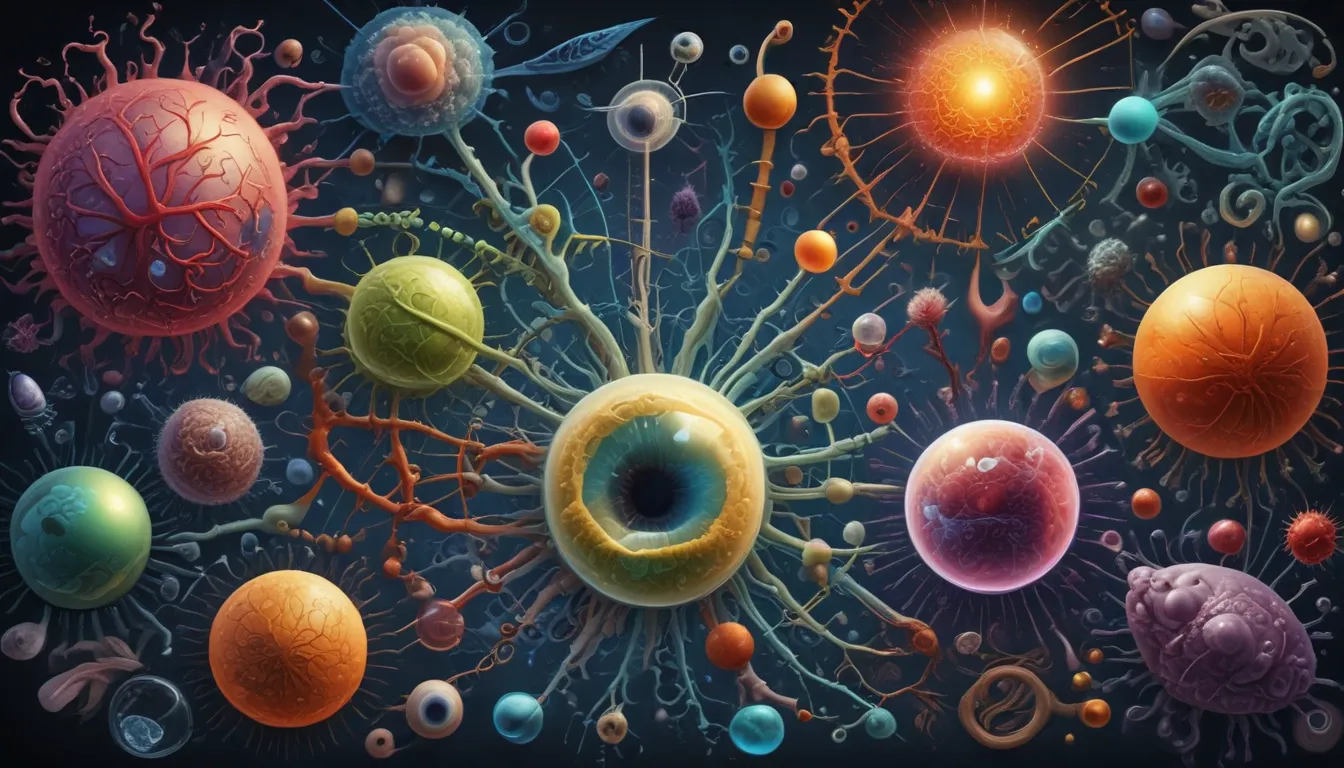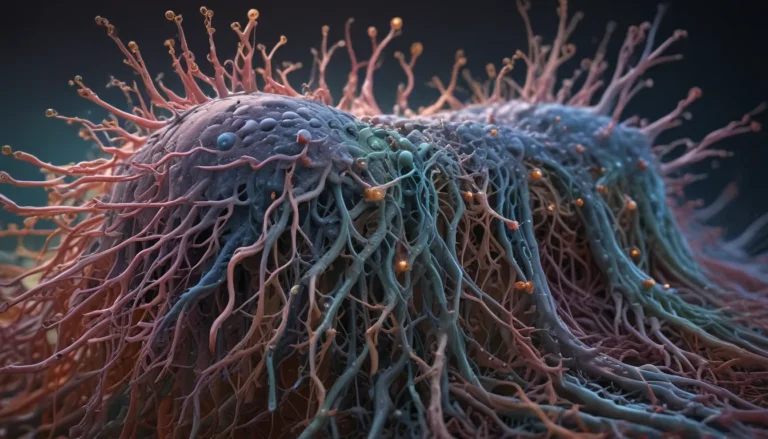A Note About Images: The images used in our articles are for illustration purposes only and may not exactly match the content. They are meant to engage readers, but the text should be relied upon for accurate information.
Biophysics is a captivating field that intertwines the principles of physics and biology to unravel the intricate mechanisms of life. By delving into the fundamental processes that govern biological systems, biophysics sheds light on how living organisms function and interact. In this article, we will delve into 17 extraordinary facts about biophysics that demonstrate its significance and impact on our comprehension of biology. From the role of thermodynamics in cell metabolism to the application of advanced imaging techniques in studying genetic material, these fascinating facts will showcase the diverse and awe-inspiring nature of biophysics.
Unlocking the Secrets of Living Organisms: Key Takeaways
- Biophysics combines physics and biology to unlock the secrets of living organisms, leading to medical breakthroughs and innovative technologies.
- By studying the physical properties of life, biophysicists help understand diseases, design artificial organs, and bridge the gap between physics and medicine.
Exploring the Wonders of Biophysics
Biophysics: The Intersection of Physics and Biology
Biophysics is an interdisciplinary field that merges the principles of physics and biology to comprehend the mechanisms and processes of living organisms at a molecular and cellular level.
Unraveling Life’s Mysteries
Through studying the physical properties and behaviors of biological systems, biophysicists can shed light on the intricate workings of cells, organisms, and ecosystems.
The Vital Role in Medical Treatments
Techniques like X-ray crystallography and nuclear magnetic resonance (NMR) allow biophysicists to determine the three-dimensional structures of proteins, aiding in designing effective drugs and therapies.
Wide Array of Research Areas
Biophysics encompasses various research areas such as molecular biophysics, cellular biophysics, neurobiophysics, and biomechanics, contributing to a comprehensive understanding of living systems.
Advanced Imaging Techniques
Methods like fluorescence microscopy, atomic force microscopy, and electron microscopy enable biophysicists to visualize biological structures and processes with remarkable detail.
Understanding Disease Mechanisms
By studying the physical properties of diseased cells and tissues, biophysicists can gain insights into the underlying causes of diseases and develop potential therapeutic approaches.
Energy Conversion in Living Systems
Biophysicists investigate how living organisms convert and utilize energy, such as photosynthesis in plants and cellular respiration in animals, to sustain life processes.
Designing Artificial Organs and Prosthetics
Understanding the biomechanical properties of tissues and organs allows biophysicists to contribute to the development of artificial organs, prosthetic limbs, and medical devices.
Exploring the Physical Basis of Biological Phenomena
Biophysicists delve into how physical laws and principles like thermodynamics and quantum mechanics govern biological processes such as enzyme kinetics and DNA replication.
Contributions to Bioinformatics
Biophysicists combine computational modeling and experimental data to analyze and predict the structures and functions of biomolecules, advancing the field of bioinformatics.
Applications in Biotechnology
Biophysicists play a pivotal role in developing tools and techniques for genetic engineering, drug delivery systems, and bio-sensing devices, driving advancements in biotechnology.
Mechanics of Cells and Tissues
Techniques like microrheology and optical tweezers are used to study the mechanical properties of cells and tissues, providing insights into their functionality and behavior.
Interaction of Light with Biological Molecules
Biophysicists explore how light interacts with molecules in biological systems, leading to advancements in areas like optogenetics and photodynamic therapy.
Bridging Physics and Medicine
By melding the knowledge and methodologies of physics and biology, biophysics contributes to advancements in medical diagnostics, imaging techniques, and therapy development.
Implications for Understanding the Origins of Life
Studying the physical processes involved in the emergence of life offers insights into the early stages of evolution and the conditions necessary for life to exist.
Rapid Evolution of Biophysics
Advancements in technology and experimental techniques continually broaden our understanding of biophysical processes and their practical applications.
Promising Future Innovations
As our knowledge of biophysics expands, it paves the way for developing groundbreaking technologies, treatments, and solutions to complex biological problems.
The Marvels of Biophysics Unveiled
Biophysics is a captivating field that intertwines the principles of physics with the complexity of living organisms. In this article, we delved into 17 extraordinary facts about biophysics that underscore the remarkable interplay between physics and biology.
FAQs: Unveiling Biophysics
1. What is biophysics?
Biophysics applies the principles of physics to study biological systems, focusing on the physical aspects of life like molecular interactions and cellular processes.
2. What are the applications of biophysics?
Biophysics has diverse applications in medical imaging, drug discovery, protein folding, DNA mechanics, and various other fields.
3. How does biophysics contribute to medical research?
Biophysics offers valuable insights into molecular processes, disease mechanisms, and therapeutic development, aiding in advancements in medical research.
4. Is a background in physics necessary for studying biophysics?
While a physics background is beneficial, biophysics is an interdisciplinary field welcoming individuals with diverse backgrounds in biology, chemistry, or engineering.
5. What are some emerging areas of biophysics?
Emerging areas of biophysics include computational biophysics, single-molecule biophysics, bioengineering, biophysical chemistry, and nanobiophysics, offering exciting avenues for research and innovation.
Biophysics weaves together the intricate tapestry of physics and biology, offering profound insights into the core principles that govern life. From deciphering the complexities of biological systems to fostering groundbreaking medical treatments, biophysics continues to push the boundaries of our understanding. If you’re eager to explore more about this captivating interdisciplinary science, delve into our article on the surprising facts about biophysical chemistry, exploring the world of molecular interactions and their impact on living organisms.
Explore the Marvels of Biophysics with Us!
Our commitment to delivering trustworthy and engaging content is rooted in the contributions of real users like you, offering diverse insights and information. Each fact is meticulously reviewed by our dedicated editors to ensure accuracy and authenticity. Trust in our commitment to quality and authenticity as you embark on a journey to explore the captivating realm of biophysics.






